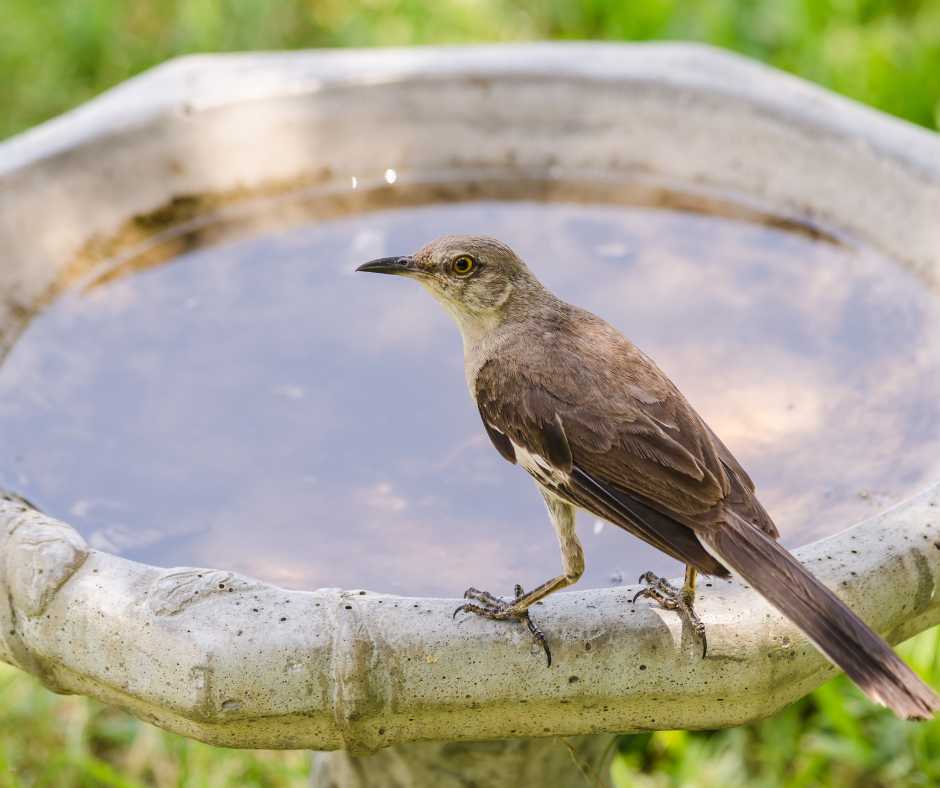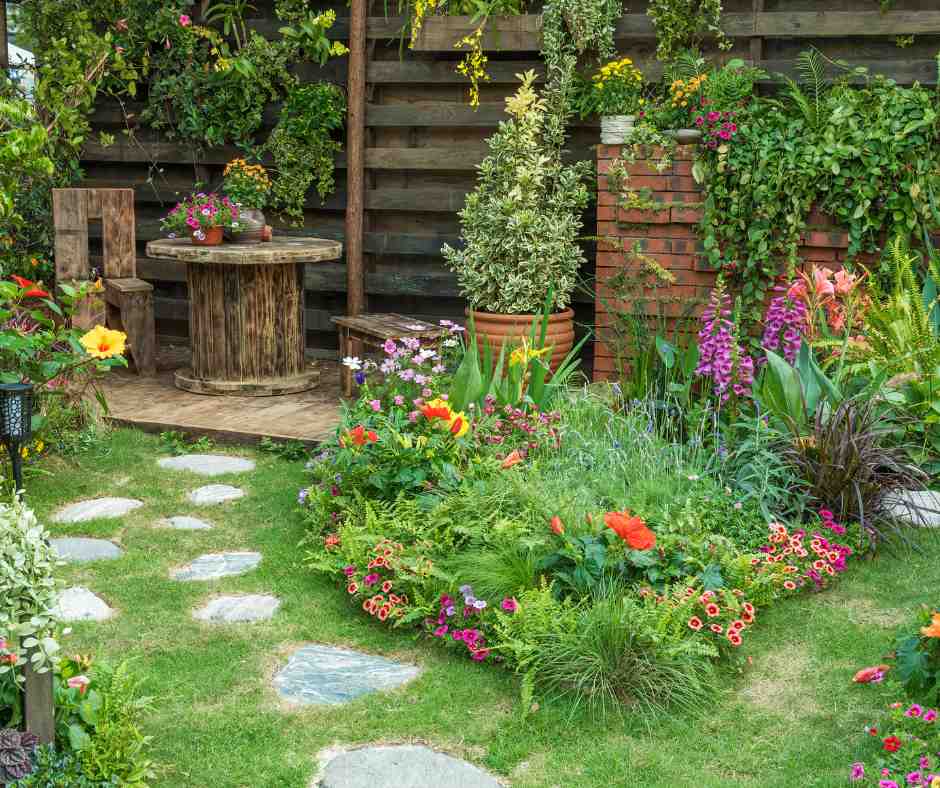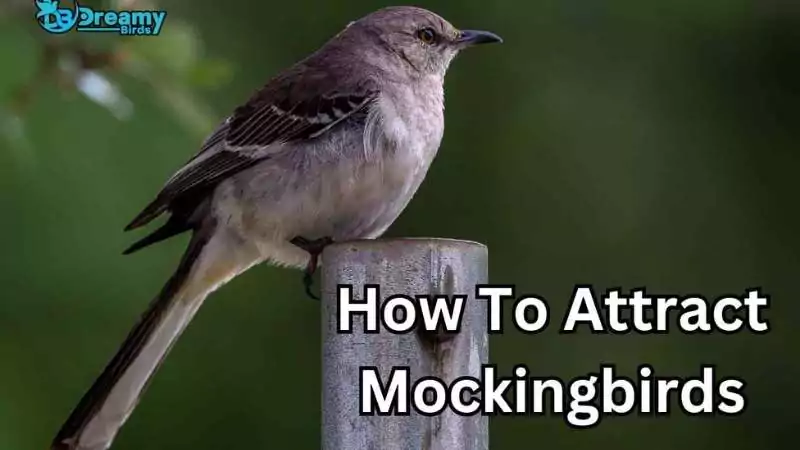Did you know mockingbirds can copy more than 200 different sounds? They can sound like other birds or even like your car’s alarm. But getting them to visit your garden can be challenging. So, how do you attract mockingbirds to your garden?
To attract mockingbirds, provide diverse plant life, water sources like birdbaths or fountains, and open spaces in your garden. Offer fruits and suet, and encourage insects to be a natural food source. Use platform or ground feeders for safety. Create a sanctuary with native plants for shelter and nesting.
This blog is here to help you attract mockingbirds and make them love staying in your garden. We’ll share tips on what they like to eat and how to make your garden right for them. You’ll learn about their songs, how to care for them all year, and how to garden in a way that’s good for the earth and mockingbirds.
Want your garden to be a place where mockingbirds love to hang out and sing? Let’s discover how small changes can fill your backyard with beautiful bird songs.
Decoding the Mockingbird: Habits, Habitat, and Hallmarks
Picture a mockingbird: sleek, grayish-white, and full of moxie. They’re the neighborhood watch of the avian world, constantly tuned in and ready to belt out a tune or mimic the world around them. These birds are natural entertainers, with a repertoire that includes other birds’ calls and even artificial sounds. Imagine waking up to a bird that sings like a car alarm – that’s your mockingbird!
Key Features and Behaviors That Make Them Unique
Mockingbirds are standout performers, not just for their vocal range but for their boldness, too. They love the spotlight, often perching conspicuously as they sing, and they’re fiercely territorial. They’re like the local band, always ready to defend their stage.
How to Tailor Your Garden to Their Preferences
Want to make your garden a mockingbird hotspot? It’s simpler than you think. Here’s a quick guide:
- Diverse Plant Life: Berry bushes and fruit trees are a hit, offering both food and shelter.
- Water Source: A birdbath or fountain is like a backstage pass, drawing them in for a drink or a splash.
- Open Areas: They love open spaces for foraging and performing, so keep your garden layout airy.

Mockingbirds don’t ask for much: a bit of nature’s bounty, a splash of water, and space to strut their stuff. Turn your garden into a mockingbird stage, and enjoy the show!
Read more: How to Teach a Parrot to Talk
The Mockingbird’s Feast: Optimal Feeding Strategies
Alright, let’s dive into the dining habits of the mockingbird, shall we? These birds are the ultimate food critics of the backyard, with a taste for variety that keeps things interesting. Depending on the season, their preferences switch between a fruit buffet and an insect feast. So, how do we cater to these eclectic eaters?
A Mockingbird’s Diet Decoded: Exploring Their Natural Food Sources
Mockingbirds have a palate that changes with the seasons. In the warm months, they’re all about that protein life, hunting down insects like it’s their job. We’re talking ants, beetles, and spiders – oh my! But they switch gears to fruits and berries when the weather cools down. It’s like they enjoy summer barbecues and then switch to fruit smoothies for fall.

What to Feed Your Feathered Visitors: Best Foods to Attract Mockingbirds to Your Garden
Want to roll out the red carpet for these songsters? Here’s what to put on the menu:
- Fruits: Apples, berries, and grapes cut into half or small pieces can make your garden a hot spot.
- Suet: Perfect for the colder months, suet provides the fat mockingbirds with what they need to stay warm.
- Insects: Though trickier to provide, consider a garden that encourages insects, offering a natural buffet for your bird friends.
Feeder Frenzy: Choosing the Right Feeders to Entice Mockingbirds
Picking the perfect feeder can feel like finding the correct spoon for your soup. For mockingbirds, platform feeders or ground feeders are your best bet. These allow the birds to scan their surroundings while they snack – safety first, right? And, if you’re offering fruits, a simple dish or a hanging feeder with large perches will do the trick.
So, there you have it – the way to a mockingbird’s heart is through their stomach, with a side of safety and comfort. Offer them a variety of foods in a safe, open space, and you’ll have them singing your praises in no time. And remember, watching what they eat and how they interact with your offerings can be as rewarding as their beautiful songs.
You may also read: How to Attract Songbirds
Water, Shelter, and Space: Crafting a Mockingbird Sanctuary
Transforming your garden into a mockingbird paradise involves more than laying out a feast. Think of it as creating a top-notch resort where water, shelter, and space are all critical for that five-star rating. Let’s break down how to achieve this trifecta and make your backyard the place to be for these melodious guests.
The Role of Water: Importance of Birdbaths and Water Features
First up, water – it’s like the spa section of our bird resort. A birdbath offers a spot for mockingbirds to drink and enjoy a refreshing splash on a hot day. But here’s a pro tip: keep that water clean and change it regularly to invite them back. Adding a water feature, like a small fountain, isn’t about aesthetics; the sound and movement of water can be irresistible to these birds, making your garden a preferred stop.
Safe Havens: Providing Protection and Nesting Opportunities
Now, let’s talk about the accommodations – everyone likes a safe, cozy place to crash. Mockingbirds are no different. They seek out dense shrubs or bushes for nesting, where they can stay hidden from predators and the elements. Planting native shrubs and trees offers them the perfect nesting sites and supports local ecology. And if you’re feeling extra, leaving a brush pile in a corner of your yard can provide the sense of security and privacy they crave.
The Layout of the Land: Designing Your Garden Layout to Attract and Keep Mockingbirds
Finally, your garden’s layout is like our resort’s floor plan. Open spaces are great for foraging, but mockingbirds also appreciate a bit of complexity. Incorporate layers in your garden with a mix of low ground covers, medium bushes, and tall trees to mimic their natural habitat. This variety gives them the freedom to explore, hunt, and nest, all within the safety of your garden. Consider offering them a complete package deal: dine, dash, and relax, all in one place.
Read more: How to Attract Indigo Buntings

Creating a sanctuary for mockingbirds doesn’t require a magic wand – a bit of thought into what makes a garden genuinely inviting from a bird’s eye view. With the right mix of water, shelter, and a well-thought-out layout, your garden will become the talk of the town (or at least the mockingbirds).
Coexisting with Mockingbirds: Peaceful Backyard Dynamics
Do you have a soft spot for those lively mockingbirds but are worried they might hog the backyard spotlight? Here’s some good news: your garden can be the ultimate hangout spot for a crew of feathered friends, including mockingbirds. It’s all about balance and ensuring enough to go around.
Do Mockingbirds Drive Other Birds Away?: Balancing Backyard Biodiversity
Mockingbirds have a rep for being the playground monitors of the bird world, keeping a watchful eye on their territory. But don’t let that deter you. With some strategic planning, you can ensure all birds feel welcome. The key? Diversity in your bird offerings. Think of your garden as a buffet with various sections: one for seeds, another for fruits, and maybe a particular corner for suet. This way, mockingbirds can enjoy their favorite treats without shooing others away from the feast.
Building a Bond: Tips on Gently Encouraging Mockingbird Visits
Fancy making friends with these melodious birds? Encouraging mockingbird visits is like being a gracious host. Start with their favorite snacks – fruits and insects are a hit. Next, consider their love for a good splash by keeping that birdbath clean and inviting.
But here’s a little secret: mockingbirds have a thing for shiny objects. Adding a small, shiny bauble to your garden might pique their curiosity. Remember, it’s about gently inviting them into your space and showing them enough room and resources for everyone.
Creating a peaceful backyard dynamic where mockingbirds and other birds thrive together is like orchestrating a beautiful symphony. Each bird plays its part, contributing to the backyard’s harmony. With some understanding and thoughtful planning, you’ll be conducting a bird orchestra in no time!

Beyond the Basics: Advanced Tips for Mockingbird Enthusiasts
Diving deeper into the world of mockingbirds isn’t only rewarding; it’s a way to connect with nature on a whole new level. For those ready to step up their game, here’s how to turn your garden into a mockingbird paradise, one note at a time.
The Mockingbird’s Melody: Understanding and Appreciating Their Songs
Mockingbirds are the virtuosos of the bird world, with a setlist covering everything from fellow birds’ calls to the beep of your neighbor’s car alarm. Their ability to mimic sounds is not for show; it’s how they communicate and stake out their territory. Spend some quiet time in your garden listening to their performances. You’ll start to notice patterns and even distinguish between different birds’ repertoires. It’s like having front-row seats to nature’s symphony!
Year-Round Care: Seasonal Considerations for Your Garden
Caring for your garden with mockingbirds in mind means thinking ahead through the seasons. In spring and summer, focus on providing plenty of insects with pesticide-free gardening practices. As fall rolls around, switch gears to ensure those berry bushes are thriving for a winter feast. And remember water sources; a heated birdbath can be a winter lifeline.
Eco-Friendly Practices: Supporting Mockingbirds with Sustainable Gardening
Going green with your garden is fantastic for our planet and a feast for mockingbirds. Picking plants that grow naturally around here helps bugs they like to eat, saves water, and keeps nasty chemicals away. Using compost makes the soil super without fake plant food, and leaving leaves on the ground helps plants stay warm and gives bugs a place to hang out.
Making your garden a favorite spot for mockingbirds is more than saying “hi” to them. It’s about making a place where they can do well. By paying attention to what they need, you’re not just watching; you’re helping make life buzz outside your house.
Navigating Challenges: Solutions to Common Mockingbird Quandaries
So, you’ve rolled out the red carpet, but the mockingbirds aren’t RSVPing to your garden party. It’s puzzling when these feathered friends seem to bypass your well-prepped space. But don’t fret; a few tweaks might be needed to make your yard more inviting.
Why Aren’t Mockingbirds Visiting?: Troubleshooting Lack of Visits
First off, let’s talk about location. Is your feeder out in the open, leaving birds slightly exposed? Mockingbirds like to dine with a dash of privacy, so consider moving your feeder closer to bushes or trees. They’re a bit like us when we pick that cozy corner table at a café – somewhere they can relax without worry.
And how about that menu? Remember, variety is the spice of life for these birds. If you’re only offering seeds, you might need to attract them. Try mixing it up with fruits and a suet block to catch their eye.
Fostering Harmony: Minimizing Conflicts Between Mockingbirds and Pets or Other Wildlife
Now, onto the neighborhood dynamics. Got a cat or a dog that loves to patrol the garden? Our furry friends might be unwitting party crashers, scaring off mockingbirds. Keeping pets indoors during peak bird visiting hours (dawn and dusk) can help. Or, consider a bell on your cat’s collar as a gentle heads-up to birds.
Wildlife can also throw a wrench in the works. Squirrels, in particular, are notorious for gatecrashing bird feeders. Squirrel-proof feeders or strategic placement away from easy jump-off points (like trees or fences) can ensure your mockingbird guests dine undisturbed.

Transforming your garden into a mockingbird haven requires detective work and trial and error. But with a few adjustments, you can solve the mystery of the missing mockingbirds and turn your garden into their favorite spot.
People Also Asked
What’s a mockingbird’s favorite snack?
Mockingbirds are all about fruit and insect life. Think berries in winter and juicy bugs in summer.
How can I make my garden more appealing to mockingbirds?
Think of your garden as a spa retreat for birds. A water source, plenty of food, and cozy nesting spots are key.
How do I keep mockingbirds safe from cats and other predators?
Keep those sneaky predators at bay by placing feeders and baths closer to cover and adding protective netting.
Can mockingbirds and other species share my garden peacefully?
Absolutely! With enough space and resources, your garden can be a little peaceful haven for all kinds of birds.
Wrap Up
Turning your garden into a mockingbird haven is about offering food, water, and shelter—simple steps to enjoy their enchanting songs. Start small; even a single birdbath or berry bush can make a big difference. As you make these changes, share your journey and discoveries.
Your efforts create a sanctuary for mockingbirds and connect you with the vibrant tapestry of nature right in your backyard. Let’s inspire each other and build a community around the joy of welcoming these melodious birds

